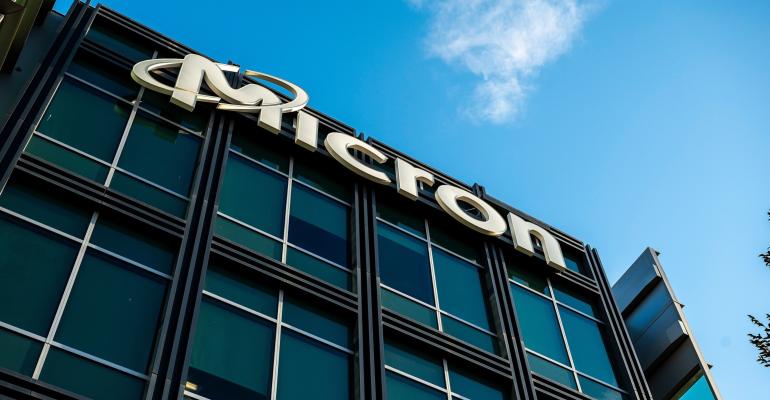(Bloomberg) -- Micron Technology, the largest US maker of memory semiconductors, gave a strong revenue forecast for the current period, indicating that data center demand is helping make up for a slowly recovering market for personal computers and smartphones.
Fiscal second-quarter revenue will be $5.1 billion to $5.5 billion, the company said in a statement Wednesday. That compares with an average analyst estimate of $4.99 billion. Excluding certain items, Micron will have a loss of 21 cents to 35 cents – narrower than the 62 cents projected by analysts.
The stock gained about 4% in extended trading following the announcement. It had been up 57% this year – in line with broader gains for chip equities – driven by investor optimism that an inventory glut is easing.
The outlook signals that Micron is through the worse of an industrywide slump and moving back toward profitability. The boom in artificial intelligence spending is helping. Chief Executive Officer Sanjay Mehrotra has pointed to strong demand for the expensive memory used in data centers to help develop AI software.
Mehrotra also repeated his prediction that 2024 will be a rebound year for the industry, setting the stage for record results in 2025. But the company will wait to boost chip output until prices improve, he said.
The company has already sold out of all of the high-bandwidth memory that it can make in 2024, Mehrotra said. That’s the type of ultrafast-access chips needed by computers that are creating AI software. That “high-revenue, high-profit opportunity for the industry” has just gotten underway, he said.
Micron is trying to recover from a year of smartphone and PC makers slashing orders. The customers built up an oversupply of inventory, sending memory prices plummeting below the cost of production.
Micron now expects PC unit volumes to grow by a percentage in the low- to mid-single digits in calendar 2024, following two years of declines. Smartphone demand also is showing signs of recovery, the company said, and will “grow modestly” in 2024.
While demand isn’t roaring back in those areas, customers have at least worked through excess inventory, Mehrotra said. That’s helped restore the supply-and-demand balance, he said. “It strengthens pricing.”
In the fiscal first quarter, which ended Nov. 30, Micron’s revenue rose 16% to $4.73 billion. The Boise, Idaho-based company had a loss of 95 cents a share, excluding certain items. That compares with estimated sales of $4.54 billion and a loss of $1 a share.
Micron gave a preview of the results late this month, warning that its operating costs have grown. The report disappointed investors, who sent the shares sliding at the time.
Micron became the largest US maker of memory chips by acquiring rivals and surviving several brutal downturns in the industry. It competes with South Korea’s Samsung Electronics Company and SK Hynix in selling the chips, which provide short-term memory in computers and phones. Micron also makes flash memory, which provides longer-term storage in those devices.
Both types of memory follow industry standards, meaning that parts from different companies are interchangeable and can be traded like commodities. The downside is that prices can be volatile, and customers can switch from one supplier to another.
Memory chip makers have been trying to push into new markets, such as data centers, cars, and an increasing array of gadgets – making them less dependent on phones and PCs. But they haven’t become diversified enough to offset the swings in demand from their core markets.





